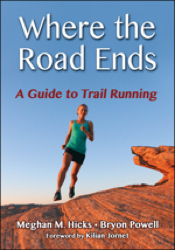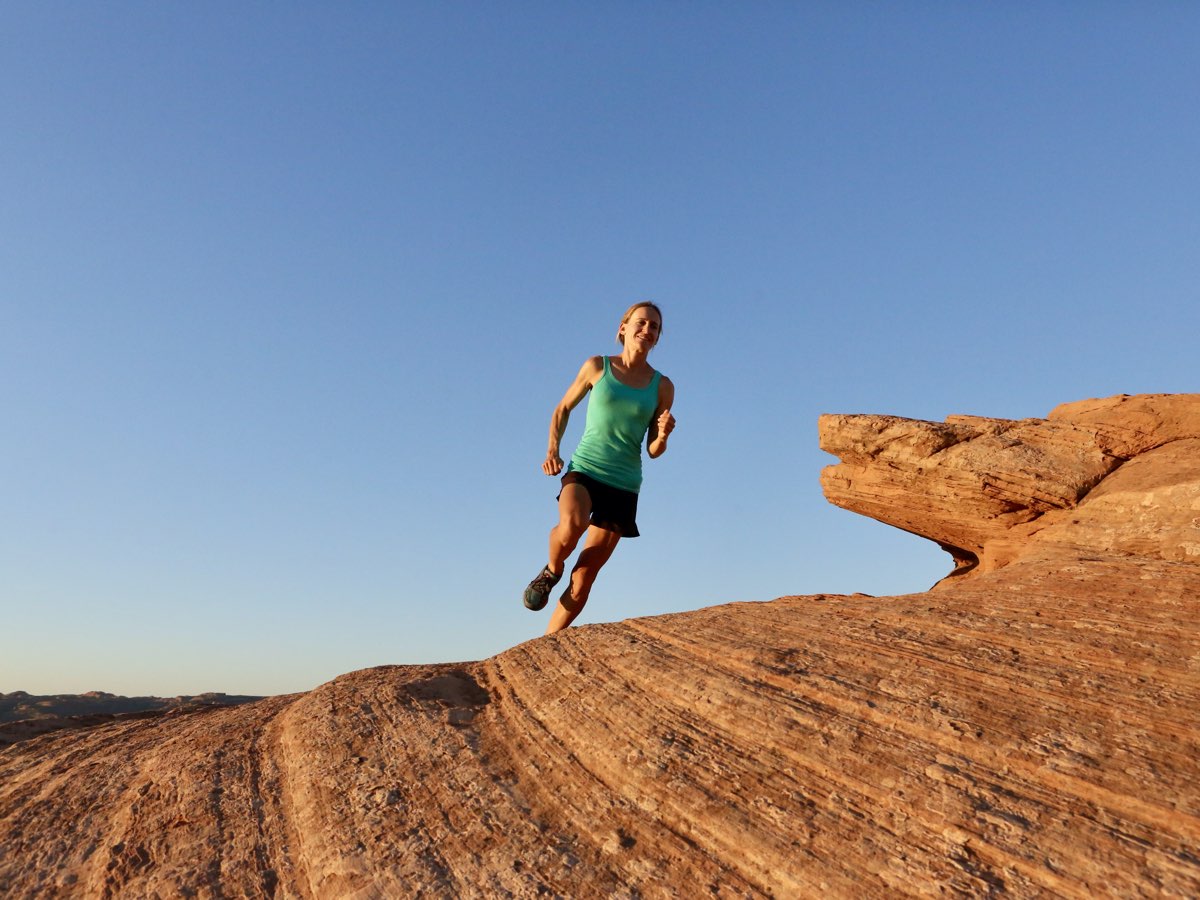
Learn more about trail running by purchasing the book “Where the Road Ends!”
Welcome to this month’s edition of “Where the Road Ends: A Guide to Trail Running!” That’s the name of both this column and the book Meghan Hicks and Bryon Powell of iRunFar published in 2016. The book Where the Road Ends: A Guide to Trail Running is a how-to guide for trail running. We worked with publisher Human Kinetics to develop a book offering the information anyone needs to get started, stay safe, and feel inspired with their trail running. The book Where the Road Ends teaches you how to negotiate technical trails, read a map, build your own training plan, understand the basics of what to drink and eat when you run, and so much more.
This column aims to do the same by publishing sections from the book as well as encouraging conversation in the comments section of each article. We want you to feel inspired and confident as you take on your first few trail runs as well as connected to iRunFar’s community of trail runners!
When you zoom out, the world is literally your playground. All those zigs, zags, ups, and downs on the trails are your roller coaster, skate park, and slalom course all rolled into one. This month, we excerpt from Chapter 4 to share techniques for tackling turns while trail running. These tips are designed to maximize both efficiency and safety on the dirt.
Tangents Versus Wide Cornering
If you’re running along at a moderate pace on a flat trail that weaves this way and that, choose the best line as dictated by the footing. If the trail is wide or you’re on a dirt road, you can gradually make your way over to the inside of the turn. That is, you work on taking the tangent on wide trails while moderating that tangential line based on footing. But, if you’re on relatively narrow singletrack and hit a sharp turn (think of a turn of 90 degrees or more within a few strides), consider heading toward the outside of the turn so that you can maintain better momentum.
When you’re running at a faster pace, you’ll need to exercise a bit more caution when taking a sharp turn. In particular, you need to take care that you have enough traction to take the turn without having your feet slide out from under you. Obviously, you can slip on mud or ice, but you should also be on the lookout for loose debris atop hard-packed trail. Moderating your speed before the turn is the surest way to stay safe in a potentially slide-inducing turn. While turning on loose footing, try to plant your feet on the most stable spots and generally avoid making sudden corrections. But if it looks like you have great footing for a step or two during a treacherous turn, take advantage of those islands of security to help carve the corner. Regardless, you should choose a general line and commit to it throughout the turn.
Anna Frost, one of the world’s best trail runners at all distances, suggests that personal preference should be your guide. “It’s up to the individual as to what’s going to be your tactic, what are you better at or more comfortable with. Some people might want to cut straight around the corner, and some people might want to bank around the outside of the corner. In the end, the time difference won’t be big.”

Miao Yao leans just a bit into a wide turn while running fast at the 2019 Hong Kong 100k. Photo: iRunFar
Quick Cornering
If you’re rolling quickly though a turn with good footing, you might catch yourself leaning into the turn like a cyclist whipping around a bend. Go with it. But you don’t want to lean excessively. Instead, trust your body’s natural reaction, which should have you leaning from your ankles, like a cyclist who leans with both her bike and her body rather than just her body, so that you commit all your mass to the lean. This technique becomes great fun when you encounter a banked turn that allows you carry your speed around the turn while slanting your body into the turn and not having to lean actively. Although you’ll encounter banked turns here and there, they’re a prominent feature in trail systems developed with mountain biking in mind.
Blind Turns
You may encounter an occasional blind turn in which you can’t see the trail on the other side of the turn. This sort of turn is especially common in forested areas. Changing topography and rock outcroppings can also hide the trail ahead. If you’re moving fast or have recently encountered challenging conditions, consider moderating your pace when heading into the turn. Even if you don’t slow down preemptively, be ready to slow or otherwise react as needed should you encounter a challenge in or after the bend.
When approaching a blind turn, you should also reengage your senses. Listen for any noises coming from the direction you’re headed and see whether you can pick up any movement to give you a heads-up. Although four-legged animals are an occasional concern, you should be especially cautious about not running into another person. If you’re in an area frequented by many outdoorsy folks, decide whether the conditions (traffic levels and degree of the turn’s blindness) warrant slowing down. Regardless, you’ll want to be able to stop in a hurry, so be ready put on the brakes. On singletrack, you’ll also want to stay to the center or right side of the trail. In areas with lots of mountain biking, be prepared to step off the trail—just in case.
Excerpted from Where the Road Ends: A Guide to Trail Running, by Meghan Hicks and Bryon Powell. Human Kinetics © 2016.
Call for Comments
What additional tips can you share for cornering efficiently and safely?

